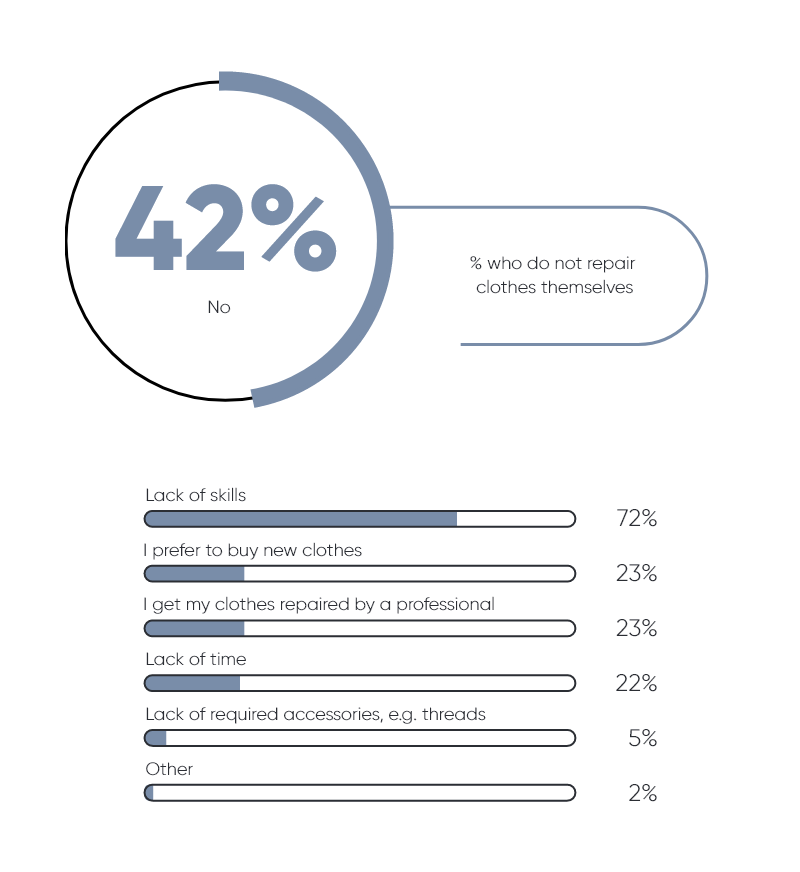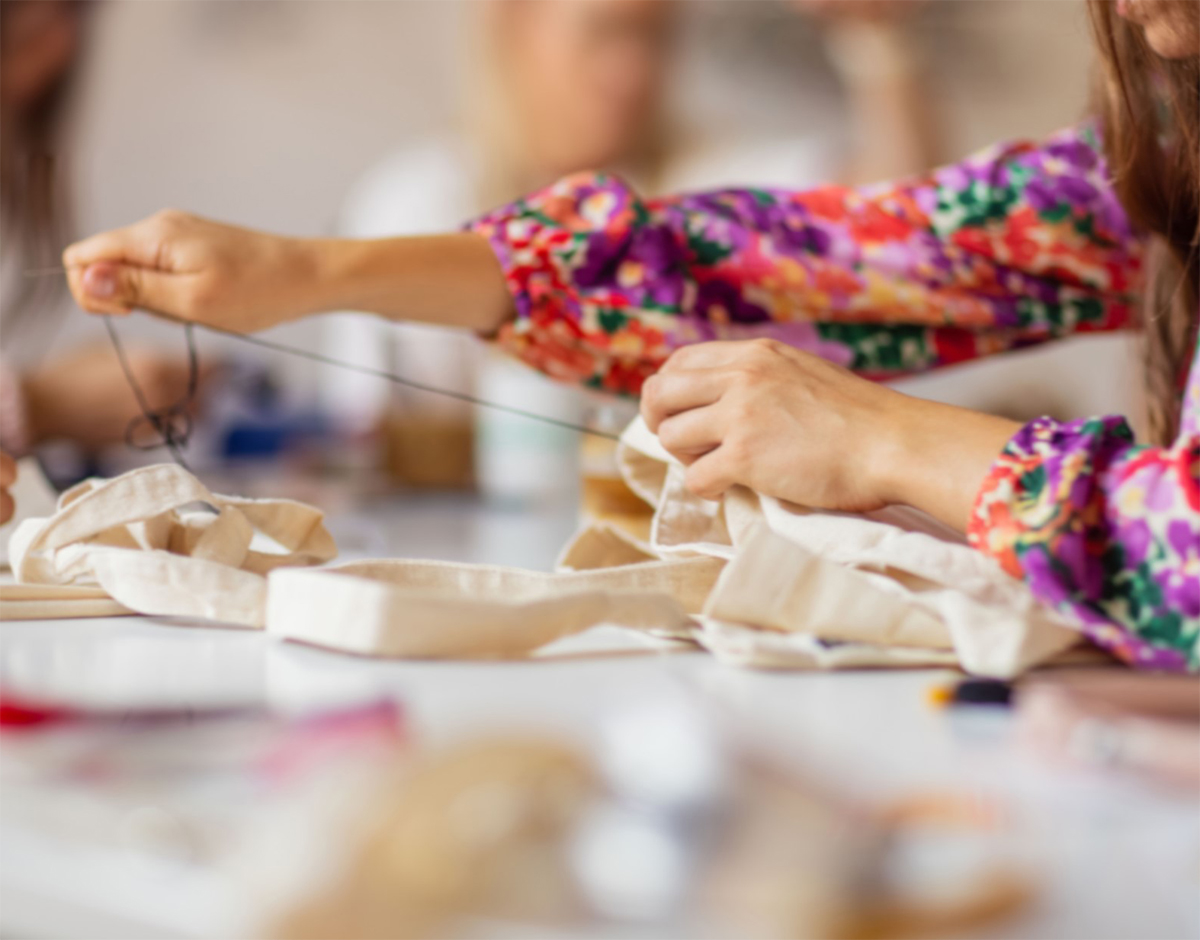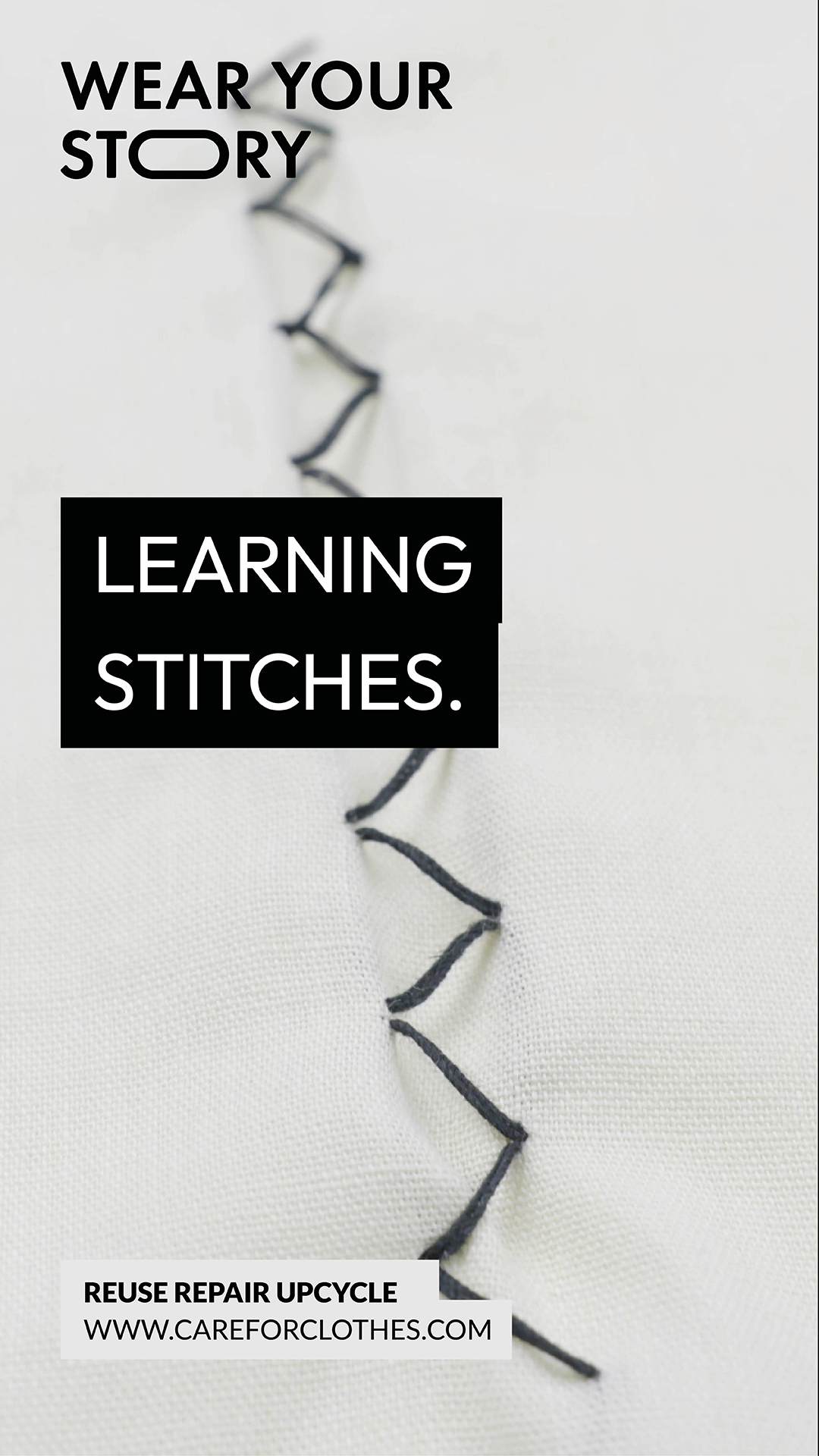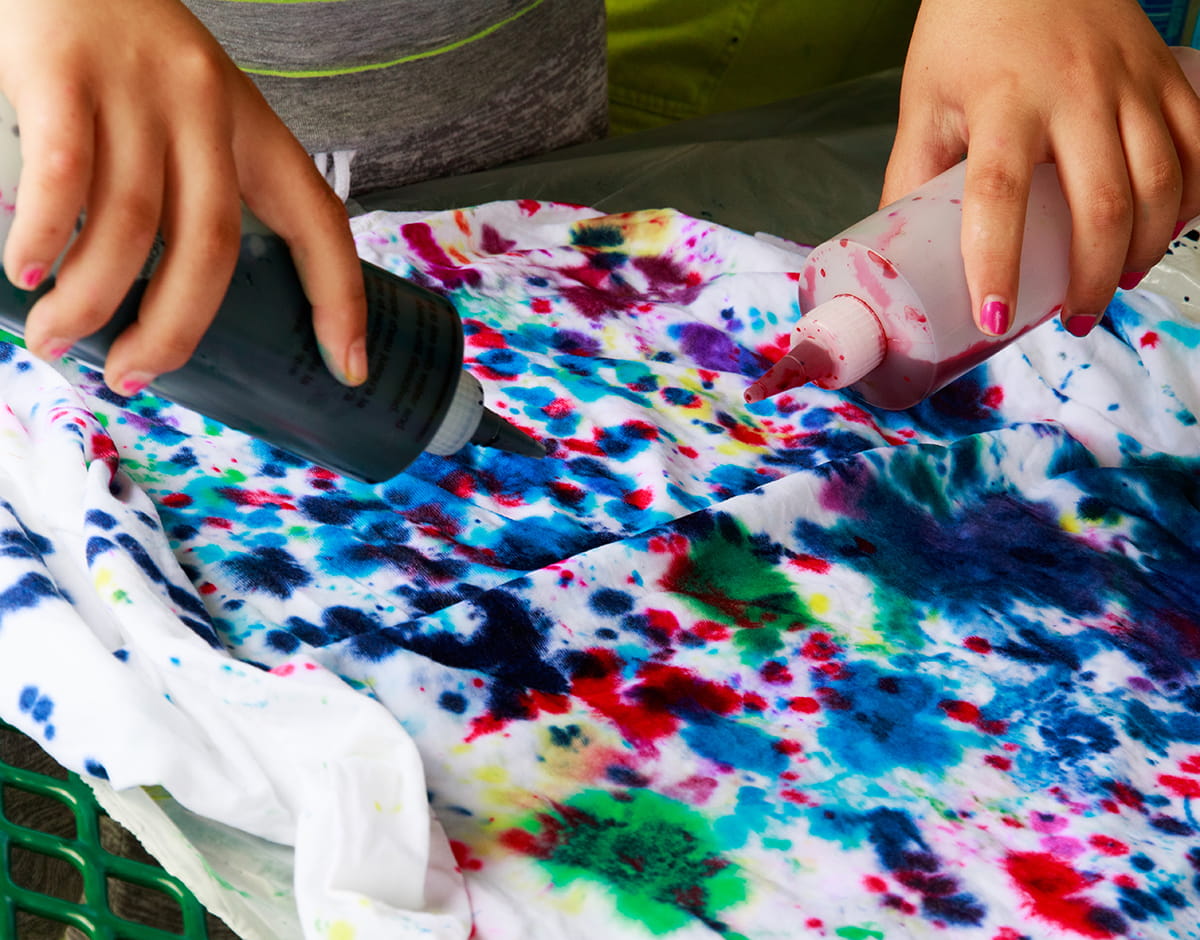Repair

Repairing will allow you to wear clothes with special memories and moments from your life for longer. Any story hidden in specific pieces of your wardrobe can stay with you for longer. A minor wrinkle, an abrasion or a broken zipper is no reason to swap your beloved shirt for a new one. Learn practical tips, tricks and hints on how to repair minor garment damage and extend the life of your clothes, as well as the memories and stories that come with it.
Learn how to start repairing clothes
Learn basic stitches
Whether you want to sew by hand or invest in a sewing machine, you need to learn the basics before you start mending clothes.
Sewing techniques worth mastering at the beginning of your adventure are:
- straight stitch, used for most basic repairs;
- covered stitch, ideal for invisible patches;
- zigzag stitch, which prevents materials from fraying;
- cross stitch, used for reinforcements.
Each of them has its own use, and together they form a base that will enable you to remedy many problems. Starting with these simple techniques, you can gradually explore more advanced methods that will allow you to make creative modifications and repairs. You can find out more about each stitch in our tutorial: [LINK].
Learn to adjust your clothing size
Adjusting clothing sizes to your figure is an invaluable skill that will not only save you money on shopping, but also give new life to clothes that no longer fit like they used to. Learn the basics of narrowing, widening, shortening and lengthening a variety of garments, from trousers and skirts to shirts and blouses.
The trouser shortening tape is the solution for anyone who wants to shorten a garment quickly and easily without sewing. Very easy to use self-adhesive tape is pressed onto the fabric with an iron.
Understanding how to modify clothes to fit you better can completely change your attitude to fashion and shopping, promoting a more balanced and conscious approach to your wardrobe. In addition, gaining these skills gives you more control over your style and allows you to personalise your clothes, making your outfits truly unique.
Don’t be discouraged if something doesn’t work out
Things don’t always go smoothly in the clothing repair journey. Anyone who has ever picked up a needle knows that minor setbacks are part of the process. Remember that mistakes are opportunities to learn and improve your skills. Don’t give up if a repair doesn’t work out the first time. Instead, try again, perhaps with a different technique or after watching another video tutorial. Over time, you will see your skill grow and your clothes get a new lease of life thanks to your determination and creativity.
Learn about the different types of materials so you know how to repair them effectively
Knowing more about the materials your garments are made of will give you the skills to repair them. Subtle fabrics, such as silk, require care, precision and the use of delicate threads, while for denim you will need more strength, confidence in your hand movements, as well as a much thicker needle and a stronger thread weave to sew up a tear, for example. By knowing the specifics of each fabric, you can more easily tailor a repair method that will not only restore your garments to their former glory, but also prolong their life, allowing you to enjoy them for as long as possible.
We don't repair because we don't know how


ARTICLES





